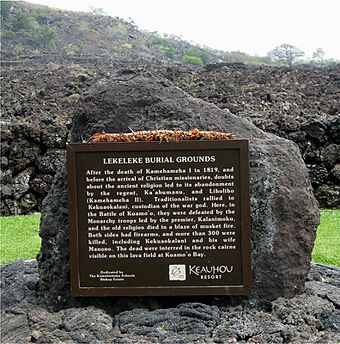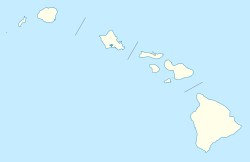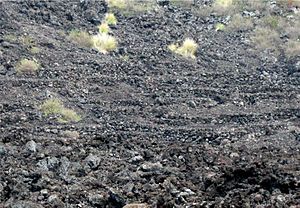Kuamoo Burials facts for kids
Quick facts for kids |
|
|
Kuamoʻo Burials
|
|
 |
|
| Location | Kona District, Hawaii |
|---|---|
| Built | 1819 |
| Architectural style | Dry stack masonry |
| NRHP reference No. | 74000714 |
| Added to NRHP | 1974 |
The Kuamoʻo Burials (also called the Lekeleke Burial Grounds) is a historic Hawaiian burial site. It's where warriors were buried after a big battle in 1819. This important place is located at Kuamoʻo Bay in the North Kona District on the island of Hawaiʻi, United States.
Contents
A Battle for Hawaiian Traditions
Why the Battle Happened
After uniting the Hawaiian islands, Kamehameha I followed the ancient Hawaiian Religion. This religion had a strict system of rules called Kapu. These rules guided daily life and worship.
When Kamehameha I died in May 1819, his wife Queen Kaʻahumanu and his son Liholiho took power. They decided to end the Kapu system. This left Hawaii without its traditional religion. Christian missionaries would not arrive until March 1820.
However, Kamehameha I's nephew, Kekuaokalani, wanted to keep the Kapu system. He believed it was important to protect these old traditions. Many common people also honored these traditions.
The Battle of Kuamoʻo
Kekuaokalani led a group of people who wanted to keep the old ways. They marched from Kaʻawaloa at Kealakekua Bay. In December 1819, they met the royal army, led by Kalanimoku, in an area known as Lekeleke.
Both sides had rifles during this battle. But Kalanimoku's army also had a small cannon on a double canoe. This gave them a big advantage. More than 300 warriors were killed in the fight. This included Kekuaokalani and his wife, Manono. They were buried under the lava rocks at the site.
The rest of Kekuaokalani's followers scattered and were later pardoned. Within a year, American Christian Protestant missionaries like Asa Thurston and Hiram Bingham arrived. Their arrival changed Hawaiian culture forever. This battle was the last of its size on the island.
Recognizing the Site
The battlefield is recognized as a historic place in Hawaii. It is listed as site 10-37-1745. In 1974, it was added to the National Register of Historic Places as site 74000714.
The name "Kuamoʻo" comes from the Ahupuaʻa (a traditional land division), point, and bay just south of the battle site. In the Hawaiian language, "Kuamoʻo" means "backbone." The burial ground itself was called Lekeleke. It sits on the border between the Ahupuaʻa of Keauhou and Honalo. Just north of this site are the Keauhou hōlua and historic Keauhou Bay.
Who Was Kekuaokalani?
Kekuaokalani was a very important figure in Hawaiian history. He was a nephew, and possibly a half-brother, of King Kamehameha II (Liholiho). He was known for his strong belief in the old Hawaiian religion and traditions.
King David Kalakaua, in his 1888 book "Hawaiian Legends," described Kekuaokalani. He said Kekuaokalani was a "grand defender of the faith." He was very tall, over six and a half feet, with a strong and handsome appearance. He was also part of the priesthood. His wife, Manono, was also known for her bravery, beauty, and high status.



